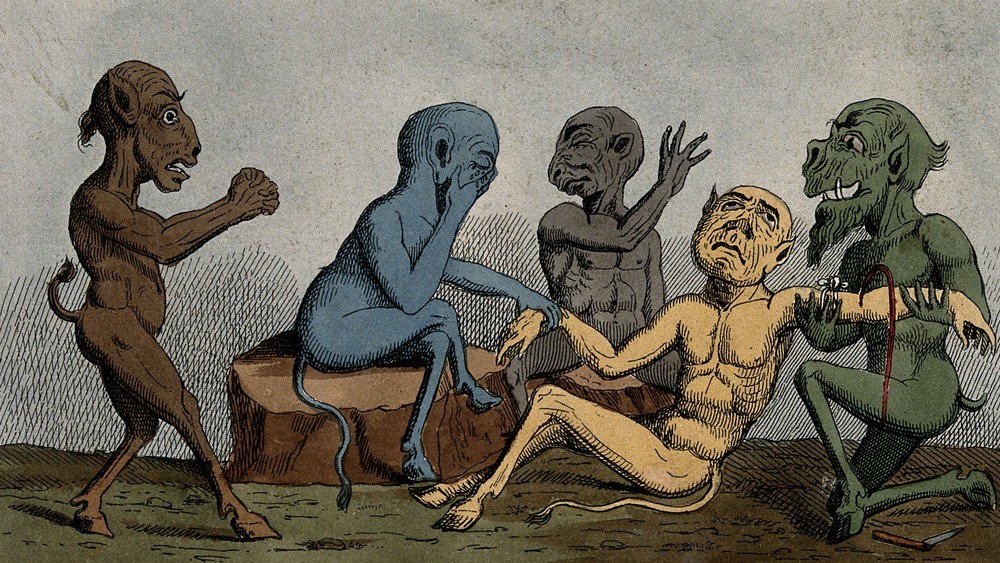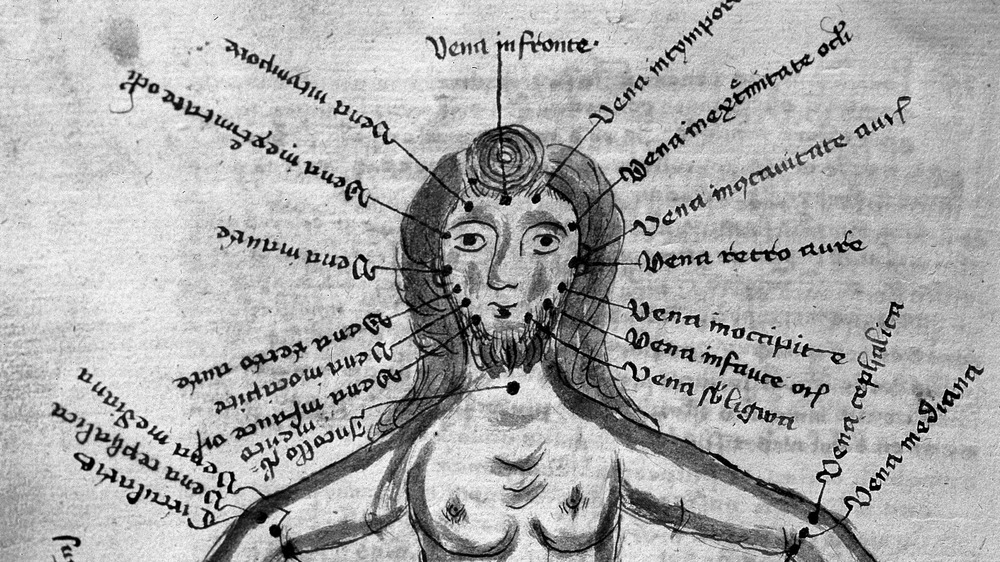The Reason Ancient Greeks Were Into Bleeding
So a guy goes to a doctor and says, "Doctor, doctor, I fell and hurt my knee, and now I have a fever!" The doctor replies, "That's okay! Come here and I'll slice open your arm so you can bleed it out." And then the guy says, "But last time there was a lot of pus." And the doctor says, "Well, if you lose some more, you won't get into so many accidents."
Aaaaaah, medicine. Yes, as Bored Panda outlines, we've come a long way since the days of using corn flakes, tapeworms, lobotomies, radioactive water, or, you know, heroin, to "do no harm," as the Hippocratic Oath says. If anyone ever takes issue with the FDA, vaccines, or plain old Advil, please take a moment to remind them that they no longer have to stuff themselves into a rotten whale carcass to "cure rheumatism," as the BBC says folks used to do in Australia around 1900 or so. Newly dead Tauntauns might have worked for Luke when he was freezing to death on Hoth in The Empire Strikes Back, but that's where we draw the line at hijacking corpses for health benefits.
And the conversation above? It might have totally happened, but not on Hoth or in 20th-century Australia (presumably). The ancient Greeks, though? They were totally into slicing people open to bleed them out for health purposes — bloodletting, by the official term — a practice that crazily continued until the late 19th century, as the BC Medical Journal states.
The Ancient Greeks believed in balancing the four humors
You might have heard about the "four humors," perhaps? And we don't mean satire, observation, slapstick, and improv (*ba DUM tss*). No, we mean black bile, phlegm, yellow bile, and blood, as the US National Library of Medicine outlines. To the ancient Greeks, these were the four fluids that composed not only the human body but accounted for human temperament. Each fluid was associated with an element: black bile with earth, phlegm with water, yellow bile with fire, and blood with air (no "heart" — sorry, Captain Planet fans). Together, these four elements (earth, water, fire, and air) formed the entirety of the material realm, as anyone who's played an RPG in the last 40 or so years could tell you.
Just like how the balance of the elements was necessary in the natural world, balance of the four humors in the human body was necessary to stay healthy. Folks who had "too much" of a particular fluid were out of balance and prone to some kind of illness. Too much black bile, a coagulating, cold substance, as Greek Medicine states, resulted in a Melancholic (sad) disposition. Too much phlegm, a moist, lubricating substance, resulted in a Phlegmatic (listless) disposition. Too much yellow bile, a hot, inflammatory substance, resulted in a Choleric (irritable) disposition. And too much blood, a nourishing, proliferate substance? It produced a Sanguine (cheerful) disposition.
But too much of it? Simple: take it out. Hey, we never said this stuff made sense.
Bloodletting as a standardized medical procedure in Ancient Greece
To be fair, the relationship between the ancient belief in the four humors and straight up bloodletting is a little more tenuous and historically complicated. As Medical News Today says, the ancient Greeks were actually quite healthy, took care of their bodies, and the wealthiest of them lived until about 70, regardless of the details of their medical treatments. Balance, in general, was the point. Hippocrates (~460–370 BCE) is the one we credit with concretizing the four humors paradigm, but it was Galen of Pergamum (129–200 CE) who took it to the next level. With a forceful personality and profuse writing output (over 2 million words during his lifetime), he established a baseline of belief that persisted through the Middle Ages: blood was the dominant humor, and bleeding was key to maintaining health.
Per the aforementioned BC Medical Journal, "Bloodletting was divided into a generalized method done by venesection and arteriotomy, and a localized method done by scarification with cupping and leeches. Venesection was the most common procedure and usually involved the median cubital vein at the elbow." These procedures became standardized over time, and were conducted using specific bloodletting tools such as a "thumb lancet" (a twin-pointed puncturing device), and a "fleam," a multiblade, foldable device like a pocket knife. Yowzas. Lucky to be alive in the 21st century, huh?
We have the ancient Greeks to thank for a lot of things, but thankfully, bloodletting isn't one of them anymore.


